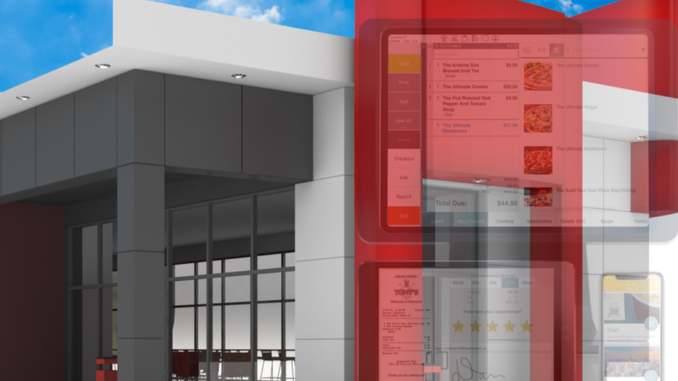
9.19.2019
As many seasoned restaurant owners can attest, the road to IT optimization can be rife with challenges. Getting on a road with the highest potential for success starts by implementing the right technology. Here are 5 pitfalls to avoid when selecting a next-generation, cloud-based restaurant POS system, according to a new research study.
1. Avoid a “locked” system.
Beware of implementing a new POS system that is “locked” to a specific credit card processor. With a locked system, restaurant owners are not allowed to shop credit card processor rates. Nor is the POS processor under any obligation to offer competitive rates. After a given number of months, the processor can raise rates. Restaurant customers have no choice but to pay the new rates.
Generally, the only way to escape this unpleasant situation is to pay a sizable cancellation fee. In many cases, the fee is equal to the entire balance of what would be due for the remainder of the minimum three-year contract. Restaurant owners and operators who unwittingly find themselves “stuck” with a specific credit card processor can feel as if they were conned into signing up for a locked system without knowing the consequences.
Having an unlocked system keeps everybody competitive and allows restaurant owners and operators to shop rates. (By the way, also beware of free or heavily discounted “locked” POS systems as merchants generally end up paying higher credit card fees in the long run; some may end up paying an additional 15 cents or more per transaction.)
This article is adapted from the new Starfleet Research study “How Top-Performing Restaurants Optimize the Guest Experience,” with underwriting support from Heartland. The eBook is now available for complimentary access. Click here to learn more and to download.
2. Avoid a cardholder data “in scope” system.
Beware of implementing a new POS system that has cardholder data (CD) “in scope.” All transactions, swiped or dipped, should be processed using modern-day technology, which means transmitting a token instead of CD.
Legacy POS systems designed to transmit CD to the processor for approvals and batch settlement tend to be extremely vulnerable to memory scrapers. Memory scrapers have their sights set on capturing CD from RAM as it’s being transmitted to the processor. They save the CD to an encrypted file, then transmit the file to a buyer, or they sell it on the deep web.
No restaurant wants to fall victim to being identified as a “common point of purchase,” also known as a data breach. That’s when things can get ugly.
3. Avoid systems that overcharge to process EMV chip cards.
Beware of implementing a new POS system that requires that the restaurant pay high additional ongoing costs to process EMV chip card transactions. Some POS systems use a third-party company for the EMV payment solution. This may not seem like a big deal, but it can end up costing thousands of dollars a year in additional transaction fees.
4. Avoid systems that require file server and/or internet uptime.
Beware of implementing a new POS system that requires an “on premise” file server. Back-office computers for POS systems tend to be a costly nuisance, contributing to system downtime. Also avoid getting a POS system that fails to function properly with the loss of internet connectivity.
Unfortunately, some POS systems can become all but inoperable when the file server crashes or the internet goes down. Orders that are placed by the server fail to go to the kitchen display stations. Staff checkout report reconciliation becomes a nightmare. It’s costly to maintain backup disaster recovery and hardware replacement contracts.
The Windows® operating system running on a file server can also mean having to purchase expensive equipment to maintain PCI compliance. Restaurant owners and operators have enough on their minds. They should not have to worry about the possible ramifications of their file server not working or the internet going down. The best of today’s cloud-based POS systems have built-in redundancy and are designed with all contingencies so that restaurant staff and guests are not negatively impacted in the case of an outage.
5. Avoid systems that lack a free open API.
Beware of implementing a POS system that does not include a free open API. Operators need to have the right tools to run their business, some of which need to integrate to their POS systems, such as accounting, inventory, labor scheduling, delivery services, email marketing and branded apps. If the POS system fails to provide a free open API, then there could be significant costs involved in getting the integrations needed and significant time spent in having to perform ongoing manual tasks if the integrations are not available.
Adapted from the new Starfleet Research study “How Top-Performing Restaurants Optimize the Guest Experience,” with underwriting support from Heartland. The eBook is now available for complimentary access. Click here to learn more and to download.

